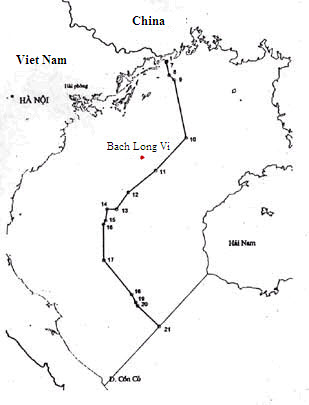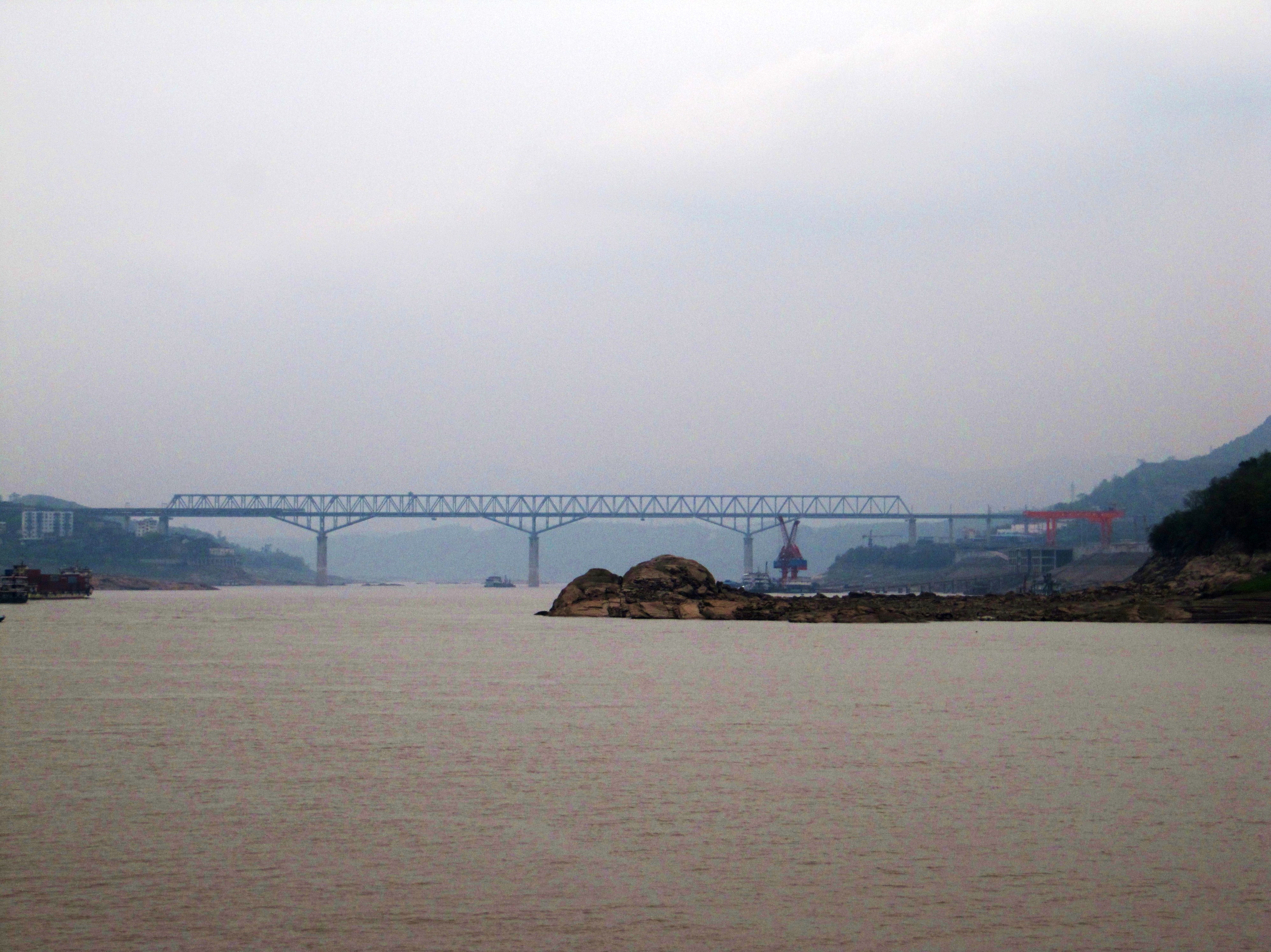|
Sichuan–Guizhou Railway
The Sichuan–Guizhou railway or Chuanqian railway (), is a single-track electrified railroad in southwest China between Chongqing Municipality and Guiyang, Guizhou Province. The shorthand name for the line, Chuanqian, is derived from the shorthand names of Sichuan Province (Chuan 川), to which Chongqing once belonged, and Guizhou (Qian 黔). The railway was built from 1956 to 1965 and had a total length of .(Chinese“川黔铁路通车40年” 贵阳交广 2005-07-15 The line was electrified in 1991. Major cities and towns along route include Chongqing, Qijiang, Tongzi, Zunyi, and Guiyang. The Chuanqian railway is a major rail conduit in western China from Baotou in Inner Mongolia to the Gulf of Tonkin. Route The Sichuan–Guizhou railway originates in the north from the Chongqing railway station and shares tracks with the Chengdu–Chongqing railway to Xiaonanhai. The line crosses the Yangtze River via the Baishatuo Railway Bridge and passes through Qijiang before ... [...More Info...] [...Related Items...] OR: [Wikipedia] [Google] [Baidu] |
Railway Electrification System
Railway electrification is the use of electric power for the propulsion of rail transport. Electric railways use either electric locomotives (hauling passengers or freight in separate cars), electric multiple units ( passenger cars with their own motors) or both. Electricity is typically generated in large and relatively efficient generating stations, transmitted to the railway network and distributed to the trains. Some electric railways have their own dedicated generating stations and transmission lines, but most purchase power from an electric utility. The railway usually provides its own distribution lines, switches, and transformers. Power is supplied to moving trains with a (nearly) continuous conductor running along the track that usually takes one of two forms: an overhead line, suspended from poles or towers along the track or from structure or tunnel ceilings and contacted by a pantograph, or a third rail mounted at track level and contacted by a sliding " pickup ... [...More Info...] [...Related Items...] OR: [Wikipedia] [Google] [Baidu] |
Gulf Of Tonkin
The Gulf of Tonkin is a gulf at the northwestern portion of the South China Sea, located off the coasts of Tonkin ( northern Vietnam) and South China. It has a total surface area of . It is defined in the west and northwest by the northern coastline of Vietnam down to the Cồn Cỏ district, in the north by China's Guangxi Zhuang Autonomous Region, and to the east by the Leizhou Peninsula and Hainan Island. English sources from the People's Republic of China refer to the Gulf of Tonkin as Beibu Wan. Description and etymology The name ''Tonkin'', written "" in chữ Hán characters and in the Vietnamese alphabet, means "eastern capital", and is the former toponym for Hanoi, the present capital of Vietnam. It is not to be confused with Tokyo, which is also written "" and also means "eastern capital". During the French colonial era, the northern region of today’s Vietnam was called ''Tonkin''. ''Bắc Bộ'' is the native Vietnamese name of Tonkin, which is the nowad ... [...More Info...] [...Related Items...] OR: [Wikipedia] [Google] [Baidu] |
Railway Lines In China
Rail transport (also known as train transport) is a means of transport using wheeled vehicles running in tracks, which usually consist of two parallel steel rails. Rail transport is one of the two primary means of land transport, next to road transport. It is used for about 8% of passenger and freight transport globally, thanks to its energy efficiency and potentially high speed.Rolling stock on rails generally encounters lower frictional resistance than rubber-tyred road vehicles, allowing rail cars to be coupled into longer trains. Power is usually provided by diesel or electric locomotives. While railway transport is capital-intensive and less flexible than road transport, it can carry heavy loads of passengers and cargo with greater energy efficiency and safety. Precursors of railways driven by human or animal power have existed since antiquity, but modern rail transport began with the invention of the steam locomotive in the United Kingdom at the beginning of the 19th ... [...More Info...] [...Related Items...] OR: [Wikipedia] [Google] [Baidu] |
List Of Railways In China
The following is a list of conventional lines of rail transport in China. For the high-speed network, see List of high-speed railway lines in China. North–south direction Beijing–Harbin Corridor * Jingqin railway; Beijing– Qinhuangdao 京秦线 * Jingshan railway; Beijing– Shanhaiguan 京山线 * Shenshan railway; Shenyang– Shanhaiguan 沈山线 * Qinshen Passenger railway; Qinhuangdao–Shenyang 秦沈客运专线 *Changda railway; Changchun–Dalian 长大线 *Changbin railway; Changchun–Harbin 长滨线 * Binzhou railway; Harbin– Manzhouli 滨洲线 In passenger rail service, Jingshan railway, Shenshan railway, Changda railway, Changchun–Shenyang portion and Changbin railway are collectively called Jingha railway (Beijing–Harbin). East Coast *Changda railway; Changchun–Dalian 长大线, Shenyang–Dalian Portion (沈大段) *Yanda railway Ferry 烟大铁路轮渡 * Lanyan railway; Lancun–Yantai 蓝烟线 * Jiaoxin railway; Jiaozhou– Xinyi ... [...More Info...] [...Related Items...] OR: [Wikipedia] [Google] [Baidu] |
Chongqing–Lichuan Railway
The Chongqing–Lichuan railway, or the Yuli railway () is a railway connecting central Chongqing with the Hubei city of Lichuan. The long railway, connecting Chongqing North railway station with the Lichuan Station on the Yichang–Wanzhou railway, is a section of the Shanghai–Wuhan–Chengdu passenger railway, which extends to Wuhan, Nanjing, and Shanghai. Services Together with the Hankou–Yichang and Yichang–Lichuan sections of the Huhanrong mainline, the Chongqing–Lichuan line forms what was, until the completion of the Xi'an–Chengdu high-speed railway, the only high-speed rail connection between the Sichuan Basin and the rest of China. It carries numerous high-speed trains running between the cities of the Sichuan Basin (Chengdu and Chongqing) and various destinations in the central and eastern China. The trains are traveling on the Yuli line with the speed up to . It was said that when the Yuli railway and the relevant sections of the Huhanrong mainline a ... [...More Info...] [...Related Items...] OR: [Wikipedia] [Google] [Baidu] |
Chongqing–Huaihua Railway
Chongqing–Huaihua railway or Yuhuai railway (), is a single-track, electrified railroad in southwest China between Chongqing Municipality and Huaihua in Hunan Province. The line is long and was built between 2000 and 2005. Cities and towns along route include Changshou, Fuling, Wulong, Pengshui, Qianjiang, Youyang Tujia and Miao Autonomous County, Xiushan, Songtao in Chongqing Municipality, Tongren in Guizhou Province and Huaihua in Hunan Province. The Chongqing–Huaihua railway was one of the 10 major projects in the Chinese government's campaign to develop western regions in 2000. The completion of the line shortened railway travel time from Chongqing to Zhangjiajie from 16 hours to 8 hours. History In September 2009, construction began on a second track for the Yuhuai railway between Fuling and Chongqing. This work was completed and put into use on 28 December 2013. Double-tracking of the entire line was completed in December 2020. Rail junctions * Chongqin ... [...More Info...] [...Related Items...] OR: [Wikipedia] [Google] [Baidu] |
Xiangyang–Chongqing Railway
The Xiangyang–Chongqing railway or Xiangyu railway (襄渝铁路), also known as the Xiangfan-Chongqing railway and Xiangyu line (襄渝线), is a single-track electrified railroad in central China between the cities of Xiangyang, formerly known as Xiangfan, and Chongqing. The short form name for Chongqing is Yu (渝) and the railway is named after the two cities. It has a total length of 895.3 km and passes through Hubei, Shaanxi and Sichuan province, and Chongqing municipality. Major cities along route include Shiyan, Ankang, Dazhou and Guang'an. The Xiangyu railway is a major transportation route that connects the Sichuan Basin with the Central Plains. It was built from 1964 to 1979, and electrified in three phases from 1980 to 1998. Trains running on the Xiangyu line can reach top speeds of 100–120 km/h. Construction of a second track began in 2005 and was completed in 2009. Second Xiangyu line The second Xiangfan–Chongqing railway () is a dual-track e ... [...More Info...] [...Related Items...] OR: [Wikipedia] [Google] [Baidu] |
Guiyang Railway Station
Guiyang railway station is a railway station in Nanming District, Guiyang, Guizhou, China. It is also a stop on Line 1 of the Guiyang Metro The Guiyang Metro is a rapid transit system in the city of Guiyang, Guizhou province, China. It is operated and branded as Guiyang Urban Rail Transit (GYURT). A short northern section of Line 1 (Guiyang Metro), Line 1 opened on 28 December 2017, .... This station handles all conventional or low-speed passenger trains that serve Guiyang. High-speed trains use Guiyang North and/or Guiyang East. History The station was opened in 1959. The station was demolished and rebuilt in 2000, the new building was opened on 30 December. References Railway stations in Guizhou Railway stations in China opened in 1959 {{Guizhou-railstation-stub ... [...More Info...] [...Related Items...] OR: [Wikipedia] [Google] [Baidu] |
Baishatuo Railway Bridge
The Baishatuo Yangtze River Railway Bridge () is a truss bridge across the Yangtze River between the Jiangjin District and the Dadukou District of Chongqing, China. The bridge carries two tracks of the Chongqing-Guiyang Railway. Completed in 1960, the bridge was the first bridge over the Yangtze River in Chongqing and only the second bridge along the main stretch of the river between Yibin and the river mouth in Shanghai. Only the Wuhan Yangtze River Bridge, completed in 1957, pre-dates the Baishatuo Railway Bridge. There are now over 50 bridges which cross the river downstream of the Baishatuo Railway Bridge. It was closed on 24 April 2019 and replaced by the New Baishatuo Yangtze River Railway Bridge, which is a six-track cable-stayed bridge, with four tracks for passenger operations on its upper deck and two tracks for freight operations on its lower deck. The old bridge is to be demolished because it is considered too low as the water level is to be raised by a dam. See a ... [...More Info...] [...Related Items...] OR: [Wikipedia] [Google] [Baidu] |
Yangtze River
The Yangtze or Yangzi ( or ) is the longest river in Eurasia and the third-longest in the world. It rises at Jari Hill in the Tanggula Mountains of the Tibetan Plateau and flows including Dam Qu River the longest source of the Yangtze, in a generally easterly direction to the East China Sea. It is the fifth-largest primary river by discharge volume in the world. Its drainage basin comprises one-fifth of the land area of China, and is home to nearly one-third of the country's population. The Yangtze has played a major role in the history, culture, and economy of China. For thousands of years, the river has been used for water, irrigation, sanitation, transportation, industry, boundary-marking, and war. The Yangtze Delta generates as much as 20% of China's GDP, and the Three Gorges Dam on the Yangtze is the largest hydro-electric power station in the world. In mid-2014, the Chinese government announced it was building a multi-tier transport network, comprising railways, ... [...More Info...] [...Related Items...] OR: [Wikipedia] [Google] [Baidu] |



